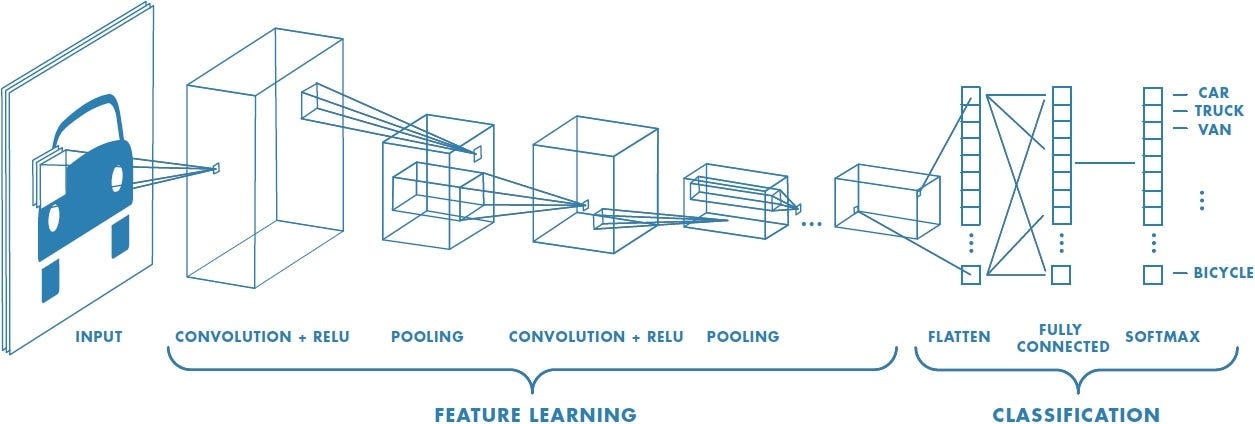A simple project where I had built a bangla digit classifier using Convolution Neural Network with Tensorflow.
End to End Peoject
Project Demo
Tech Stack
WebApp Structure
Project Steps
Run Locally
Facing Problem While using Opencv
Run Docker container from Docker Hub
Azure Deployment
Potential Error & Solution while deploying
Further Reading on Neural Network & CNN
Acknowledgements
- Image processing/filtering
- Model Building in Tensorflow
- Model Evaluation
- API with Flask
- Frontend
- Dockerfile
- Deployment in Azure
Live website link : https://bangladigitclassifier.azurewebsites.net/
Pc Web browser Demo
Mobile Demo
Client :
Server : Deep Learning Framework : Image Filtering : Deployment :-
-
def find_folders(path,search,csv=False): list_of_folders = [] if csv==False: for i in os.listdir(path): training_folder_ptr = re.search(search,i) # search for pattern if training_folder_ptr != None: # if pattern matches if i.endswith('.csv') != True: # grabs only the non csv string list_of_folders.append(os.path.join(path,i)) # join and create the path else: for i in os.listdir(path): training_folder_ptr = re.search(search,i) if training_folder_ptr != None: if i.endswith('.csv') == True: list_of_folders.append(os.path.join(path,i)) return list_of_folders
Output:
['/home/shoaib/Programming/Project/data/training-e', '/home/shoaib/Programming/Project/data/training-b', '/home/shoaib/Programming/Project/data/training-a', '/home/shoaib/Programming/Project/data/training-d', '/home/shoaib/Programming/Project/data/training-c']
-
Now use a python library
globto get all the image path from the folders.def grab_all_img(list_of_folders): all_img_path = [] all_img_name = [] for i in range(len(list_of_folders)): img_list = glob.glob(list_of_folders[i]+'/*.png') all_img_path.extend(img_list) for i in range(len(all_img_path)): all_img_name.append(all_img_path[i].split(sep=os.sep)[-1]) # splitting abc/12av.png into abc,12av.png and -1 return last index value return all_img_path,all_img_name
-
More details of the code is in the notebook.
-
-
def fillter_img(image_obj_list,img_size): img_np = [] for i in range(len(image_obj_list)): img = cv.resize(image_obj_list[i].get_image(),(img_size,img_size)) img_guass = cv.GaussianBlur(img,(9,9),10) # will denoise it img_weighted = cv.addWeighted(img, 1.5, img_guass, -0.5, 0,img) # combining the image with guassian blur kernel = np.array([[-1,-1,-1], [-1,9,-1], [-1,-1,-1]]) #filter img = cv.filter2D(img_weighted, -1, kernel) # filter apply img = img.reshape(img_size,img_size,1).astype('float32') # reshape the numpy array taking only one color channel img_np.append(img) # for printing print('processed {}/{}'.format(i+1,len(image_obj_list)),end='\r') img_np = np.array(img_np) return img_np
-

-
model.save('./base_model_bangla_digit_classification')
-
-
to get the base64 image from the canvas I have use
toDataUrlfunction of the canvas in JavaScript.function getURI() { const canvas = document.querySelector("canvas"); const dataURI = canvas.toDataURL(); return dataURI; }
-
read the image as base64 using
base64module in pythonencoded_data = url.split(',')[1] nparr = np.fromstring(base64.b64decode(encoded_data),np.uint8)
-
-
function ajReq() { var xml = new XMLHttpRequest(); xml.open("POST", "/predict", true); xml.setRequestHeader("Content-type", "application/x-www-form-urlencoded"); xml.onload = function () { var dataReply = JSON.parse(this.responseText); document.getElementById("inputField").value = dataReply.prediction; }; URI = getURI(); dataSend = JSON.stringify({ url: URI, }); xml.send(dataSend); }
Here
/predictis sending request to flask server's predict route.
Clone the project
git clone https://github.com/KillerShoaib/BanglaDigitClassifierCNNGo to the project directory
cd BanglaDigitClassifierCNNCreate a virtual env (linux)
source python3 -m venv venvInstall dependencies
pip install -r requirements.txtStart the server
python3 app.pypip uninstall opencv-python-headlesspip install opencv-python
Note: opencv-python does not work on cloud or docker container properly. Use opencv-python-headless to deploy it on cloud.:
sudo docker run killershoaib/bangla_digit_classifier- Create a an azure account
- Create a resource group
- Create an app service in the portal and link the GitHub repository and save it. After that the the deployment will start
- Youtube VIdeo Link
-
ERROR : Could not find a version that satisfies the requirement tensorflow-io-gcs-filesystem==version
-
Solution :
pip uninstall tensorflow-io-gcs-filesystem
-
Error After Deploying : Importerror: libgl.so.1: cannot open shared object file: no such file or directory
-
Solution :
pip uninstall opencv-python
Then :
pip install opencv-python-headless








